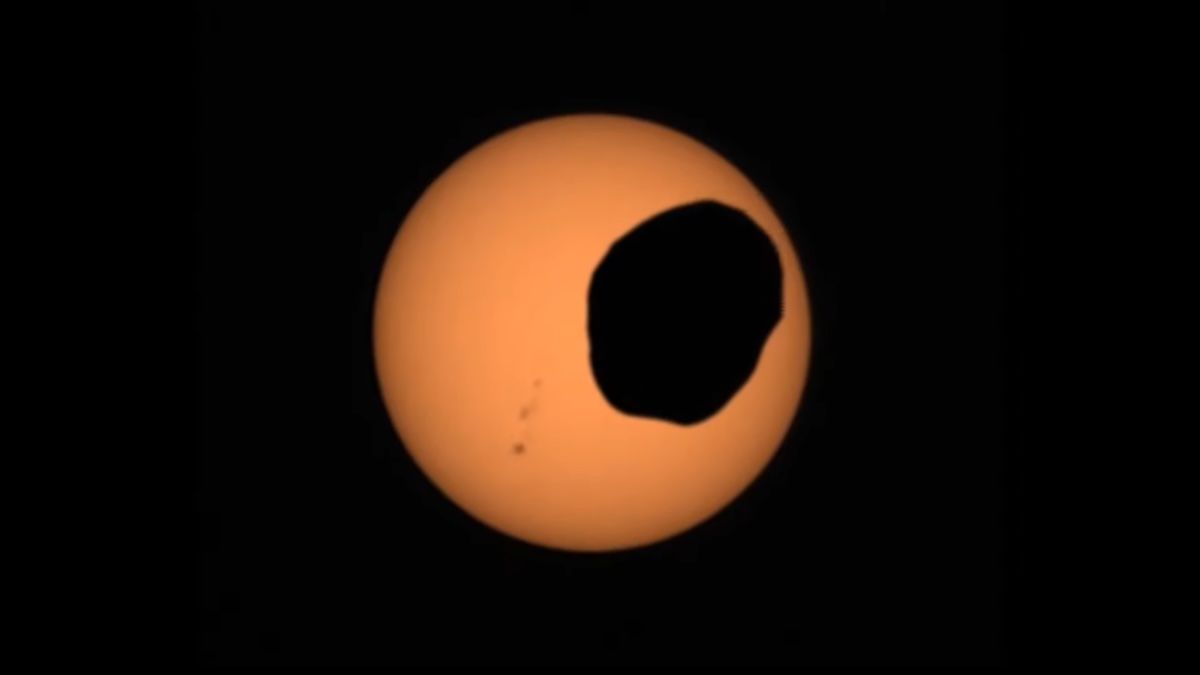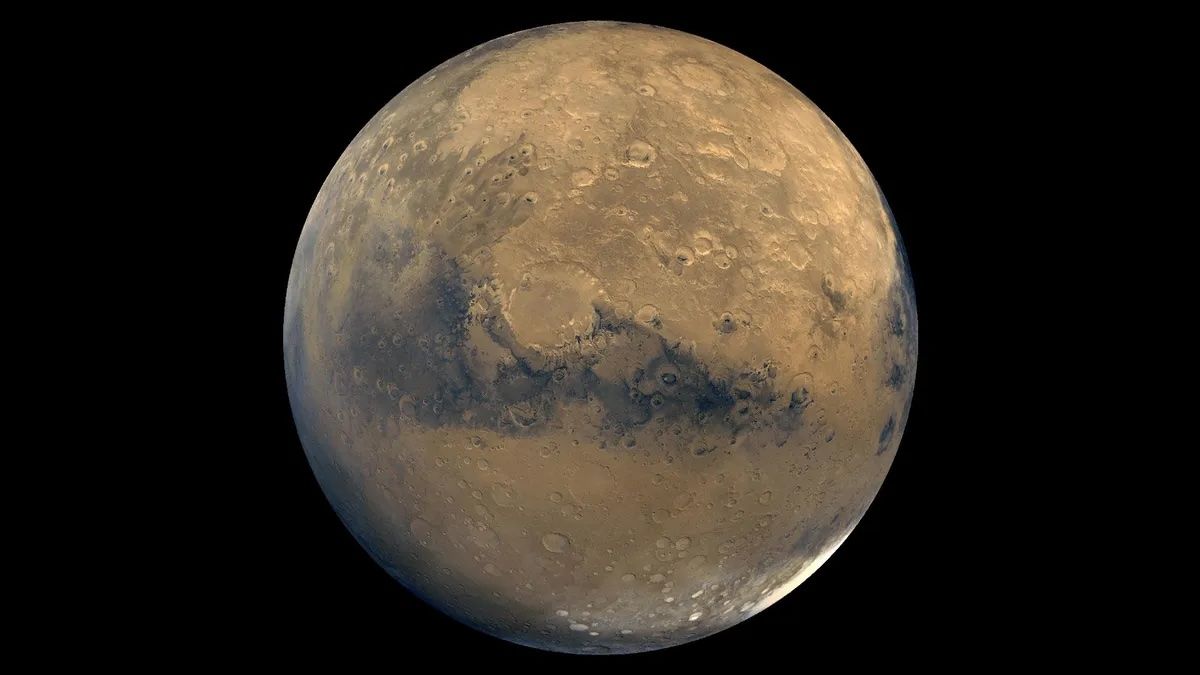A long-lost moon may explain why Mars is so different from the other rocky planets in the solar system.
today, MARCH there are two small moons. But early in its history, the Red Planet may have had a much larger moon, which could account for Mars’ odd shape and extreme terrain, suggests Michael Efriimsky, an astronomer at the US Naval Observatory- in Washington, DC, in a paper that has been submitted to the Journal of Geophysical Research: Planets and is available as a preprint via arXiv.
Mars hosts some of the most extreme terrain in the solar system, including the largest canyon, highest mountain, and largest highland region. This mountainous region, known as the Tharsis Bulge or Tharsis Rise, dominates the western hemisphere of Mars near its equator. The Tharsis region is about 3,100 miles (5,000 kilometers) wide and rises to 4.4 miles 7 (km) high, excluding its massive shield volcanoes, which rise even higher. Almost exactly on the opposite side of the planet from Tharsis is Terra Sabaea and Syrtis Major, another mountainous region and massive shield volcano, respectively.
Either way, Nerio’s significant mass changed the shape of Mars with it gravityraising tides in magma oceans in the same way the earth’s moon raise the tides in our planet’s oceans today. But because Mars is smaller than Earth, it cooled much faster, and its tidal bulges closed in on the resulting planet shape.
Somehow, Nerio was lost, Efrromsky wrote. It could have been obliterated by an impact, leaving behind Mars’ current moons, Phobos and Deimos, he proposed, or it could have been scattered outside the solar system through a gravitational interaction with another body.
Such collisions and scatterings were common in the early solar system. Astronomers think earth gained its moon through a collision with a Mars-sized protoplanet, and scatterings between the outer planets shifted their initial orbits, which were once much closer to the sun, to their current positions.
But as long as Nerio stuck around long enough to deform Mars as it cooled, it could have set the stage for that planet’s dramatic landscape, Efrromsky said. Further geological processes could have continued at work, raising the highlands and leading to the strange shape of Mars.
Related: NASA’s Curiosity rover accidentally discovers ultra-rare sulfur crystals after crushing a rock on Mars

Although the possibility is interesting, Efrromsky admitted that Nerio’s explanation is only a hypothesis. The idea of a large moon held briefly raises many questions, especially regarding its formation and eventual disappearance. For example, if Nerio had been destroyed, it should have left a series of craters along the belt consistent with its orbit, but such a series of craters does not exist. On the other hand, further collisions and geological activity could have erased those traces.
Plus, the hypothesis requires that geologic processes take the Nerio-initiated uplifts and deformations into their present-day forms, elevating the original highlands even higher. While it is reasonable to assume that the heating and cooling processes in the interior of Mars would naturally exaggerate any distortions in the shape of the planet, this is not guaranteed.
Efrromsky has called on other researchers to evaluate the idea and see if there are clever ways to look for evidence of this lost moon.
Join our Space Forums to keep talking about the latest missions, the night sky and more! And if you have a tip, correction or comment about the news, let us know at: community@space.com.
Originally posted on Space.com.
